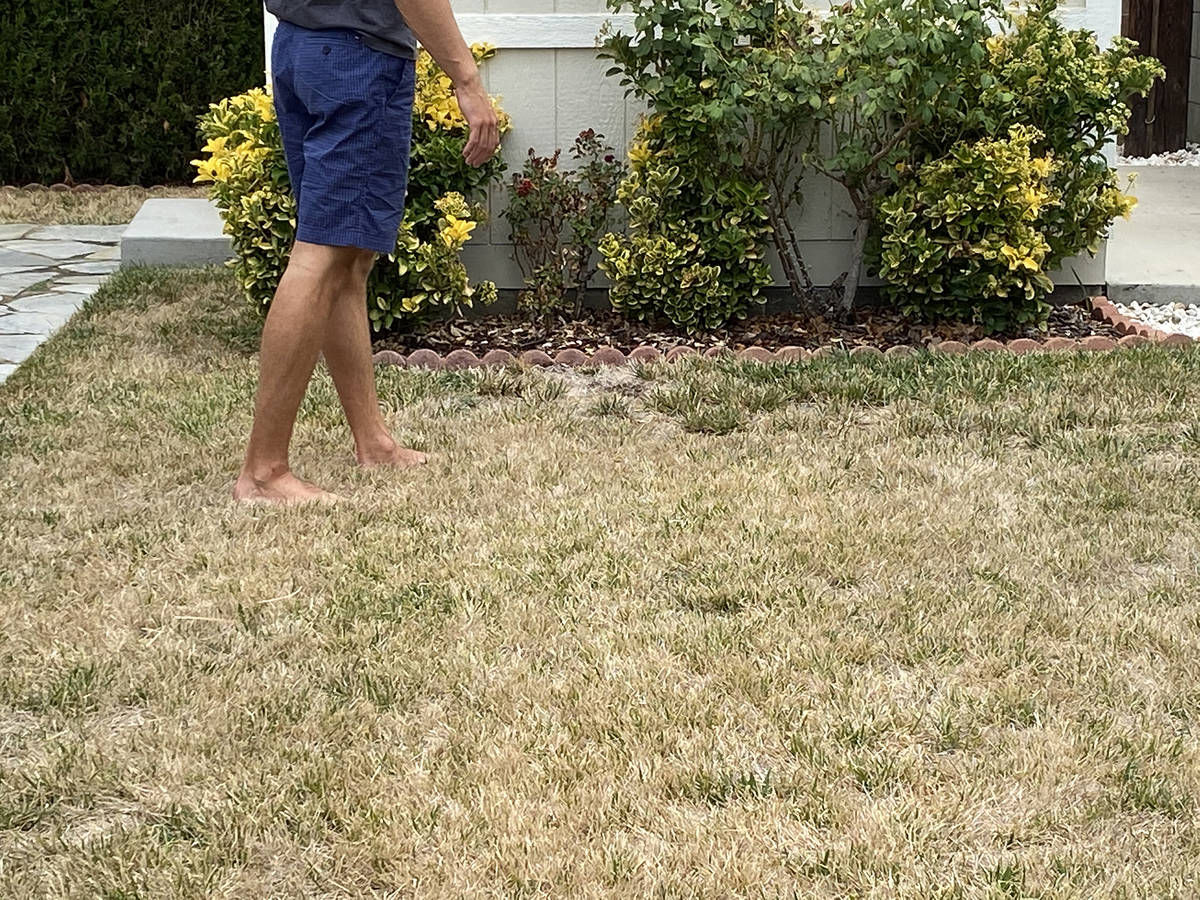Healthy lawns can weather summer temperatures
When high winds meet temperatures exceeding 110 and UV indexes of 10-plus, the desert can feel like a big, sandy convection oven. While we can escape the blaze in our climate-controlled homes, businesses and cars, the great outdoors, well, ain’t so great. One of the places we see the ravages of these extreme weather conditions is in our lawns and yards.
Wind alone is hostile to plants, tearing small holes and shredding leaves, but hot wind, that’s the bigger issue. Through a process called desiccation, hot wind dehydrates leaves, making them brown and crispy. Even if the soil is adequately watered, roots may not be able to keep up with the amount of water being lost through the leaves.
With such climate extremes, even our indigenous creosote bushes are looking fried. That said, xeriscape and zeroscape yards fundamentally fare better here.
Two similarly sounding landscapes, they’re actually quite different. Zeroscape means pretty much just that —“zero” landscaping — gravel, dirt and a few token plants. Xeriscape is the lovely landscape we see along the sides of Boulder City Parkway; it’s organized with a design plan that requires very little water and maintenance.
No doubt zeroscape and xeriscape landscapes have their place here, but historically, Boulder City is known for being an “oasis in the desert.” The city’s website reads, “The many parks and planned landscaping in the city, along with the green, grassy lawns and tree-lined streets in the residential areas, combine to make Boulder City an oasis in the desert and continue to give the city its distinctive character.”
On these hot summer days we’re so fortunate to be able to enjoy our shady parks with lush green lawns. Back home, as I walk over my crunchy burnt lawn, I’m green with envy at how Boulder City landscape crews are able to keep our parks so beautiful, especially during these extreme conditions.
For expert advice I reached out to Sergio Solis-Sauri, landscape supervisor in the public works department.
“It is a matter of keeping the lawn healthy as you go into the summer temperatures. Proper watering practices, fertilization, mowing and other maintenance as needed,” explains Solis-Sauri.
Regarding watering, he said “Generally, only once a day, unless dry spots need extra water during the day or irrigation repairs or other maintenance require checking the system or extra water for the specific maintenance. We schedule irrigation at night, after parks close, with the exception of special event scheduling, when nighttime irrigation is not possible, then we irrigate during the day. The duration of watering each time depends on the type of grass, soil, irrigation system, etc. SNWA website provides excellent tips on how and when to water grass.” (https://www.snwa.com/landscapes/how-and-when-to-water/sprinkler-watering-tips.html)
Solis-Sauri explains that lawns are prepped before getting into summer months, using “controlled release” fertilizer sources. As for weeds: “The best strategy to keep weeds out of lawns is to keep the grass healthy. An IPM (integrated pest management) approach is also the best strategy to keep weeds out of lawns. Identify the reason why weeds are growing in your lawn and resolve the issue (irrigation practices, too much or not enough; mowing height, too low, etc.). Whenever possible, begin by removing weeds by hand as soon as they are present. When mechanical control (removing by hand) is unattainable, use approved pre-emergence or post-emergence herbicides to control weeds.”
While Solis-Sauri says the biggest lawn mistake is excessive irrigation, he describes the best way to keep a healthy lawn is doing a visual inspection every day. “… observe any changes that may indicate a developing issue, whether it is irrigation, weeds, or other pests that may affect it; stay alert and address as soon as possible.”
Solis-Sauri adds, “with proper management, many plants are grown successfully in Southern Nevada. Refer to the Southern Nevada Regional Planning Coalition Plant List; in it you will find a list of plants adapted to this area and their characteristics.”
Norma Vally is a seasoned veteran of home improvement; her career includes four seasons as host of Discovery Home Channel’s Emmy-nominated series “Toolbelt Diva.” A columnist and author, Vally splits her time in Southern Nevada, Los Angeles and New York City. Follow her on Facebook at Norma Vally “Toolbelt Diva” and visit her at www.NormaVally.com. Email Norma@NormaVally.com.









